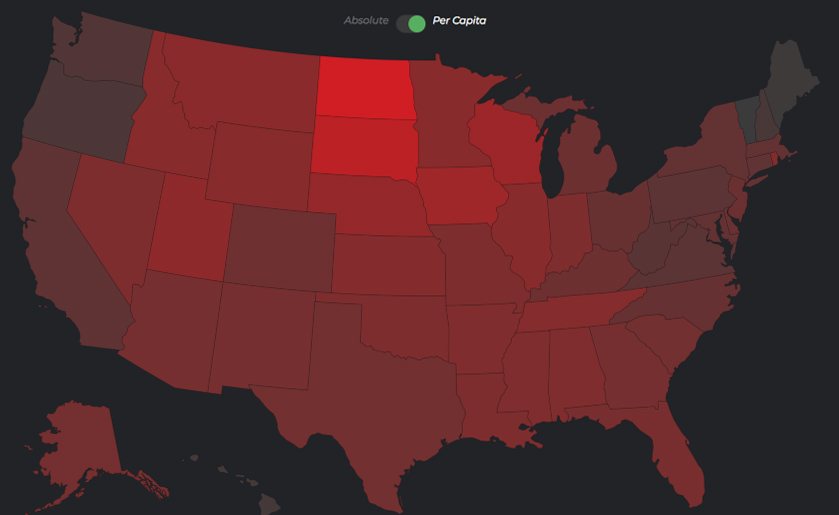California could soon face another near lockdown if alarming Covid-19 case and hospitalization rates keep pace. Gov. Gavin Newsom delivered the somber update Monday, pointing out that the number of hospitalized coronavirus patients increased by just shy of 90 percent in the past two weeks.
In a Twitter message following the governor’s press conference, he said:
“Current projections show CA will run out of current ICU beds before Christmas Eve.”
California Department of Public Health adjustments over the weekend pushed more counties into the most restrictive purple tier on the state’s Blueprint for a Safer Economy, San Francisco and San Mateo counties among them. As of now, approximately 99 percent of the state’s population is subject to purple tier restrictions and some counties, such as Santa Clara, are imposing restrictions beyond what state guidelines mandate.

It’s a similar story in most states across the nation as people try to navigate the holiday season in the middle of a raging pandemic. Health officials are bracing for consequences of Thanksgiving gatherings and travel, which will come to light over the course of the next two to three weeks.
Newsom said Monday that “more dramatic, arguably drastic action” may become necessary in purple tier counties if the trend continues or intensifies, making another stay-at-home order a strong possibility. Restraint and caution will be required through the holidays in order to keep spread to a minimum. Data otherwise suggests a grim winter.

In just the Bay Area, more than 800 confirmed Covid-19 patients are currently hospitalized and about 200 are being treated in ICU beds:
- Alameda County: 171 hospitalized, 52 in ICU (Nov. 29); 29,668 total cases, 512 deaths (Nov. 29)
- Contra Costa County: 106 hospitalized, 26 in ICU; 24,475 total cases, 261 deaths (Nov. 30)
- Marin County: 10 hospitalized, 3 in ICU (Nov. 29); 5,566 total cases, 101 deaths (Nov. 30)
- Napa County: 15 hospitalized, current ICU patients unknown; 3,067 total cases, 18 deaths (Nov. 30)
- San Francisco: 91 hospitalized, 27 in ICU (Nov. 29); 15,639 total cases, 160 deaths (Nov. 28)
- San Mateo County: 61 hospitalized, 13 in ICU (Nov. 30); 14,614 total cases, 170 deaths (Nov. 30)
- Santa Clara County: 286 hospitalized, 78 in ICU (Nov. 30); 35,085 total cases, 476 deaths (Nov. 30)
- Solano County: 63 hospitalized, Covid-19 ICU patients not specified, though 33 percent of the county’s ICU beds remain available (Nov. 30); 10,648 total cases, 81 deaths (Nov. 30)
- Sonoma County: Current hospitalization data not provided by county; 12,319 total cases, 157 deaths
There was positive news Monday on the vaccine front in an announcement that the state expects to receive a batch of 327,000 initial vaccine doses by mid-December, with another round arriving three weeks later. However, that schedule is reliant on emergency FDA approval and the dose allotment will not make much of an immediate dent in the state’s massive population.

The current state of the nation, in terms of both Covid-19 and the related economic crisis, is a gut punch. Small businesses are closing rapidly — neighborhoods are losing restaurants, salons and bookstores. Kids still really can’t go back to school, not with any sense of normalcy.
The extended nature of the pandemic here in the U.S. has taken many Americans to the cliff. The U.S. Department of Labor reported that new unemployment claims in the week ending Nov. 21 increased by 10.5 percent from the week prior. Congress has so far failed to pass a second stimulus bill that could bolster unemployment payments and alleviate strain on small businesses, localities and individuals.
According to John Hopkins University Coronavirus Resource Center, more than 13.5 million people in the U.S. have contracted the virus and nearly 270,000 have died as a result. SFBay tracking notes that North Dakota is experiencing the highest infection rate with 104,799 per million residents, in stark contrast to California’s 31,247 per million.
